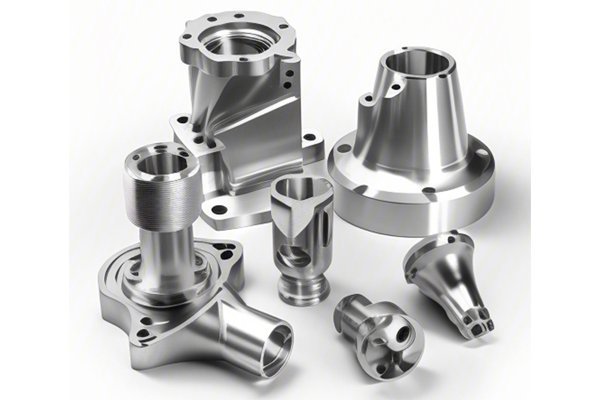Did you know that Swiss CNC turning technology has revolutionized the manufacturing of complex, high-performance components across various industries, achieving tolerances as tight as ±0.002 mm? This level of precision not only enhances performance but also reduces waste and production time, making it an essential process for manufacturers focused on quality and efficiency. In this blog, we’ll explore the intricate world of Swiss CNC turning for high-performance alloy parts, detailing its advantages, applications, and best practices.
Swiss CNC turning, or Swiss machining, originated from the traditional Swiss watch-making industry and has evolved significantly over the years. This technology is designed for the production of small, precise parts, typically from bar stock. Unlike conventional CNC turning, which can often require multiple tool changeovers and setups, Swiss CNC turning allows for a streamlined, continuous-process approach.
Key Features of Swiss CNC Turning:
As industries demand shorter production times coupled with high-quality standards, Swiss CNC turning presents a plethora of benefits:
2.
The most significant advantage of Swiss CNC turning is its capability to produce highly accurate parts consistently. This precision is essential in industries such as aerospace, automotive, and medical devices, where even minor deviations can lead to catastrophic failures. With advanced software and machinery, Swiss CNC turning can achieve tolerances of ±0.01 mm or even tighter, depending on the material and design.
2.
With the ability to control multiple tools simultaneously, Swiss CNC turning can significantly reduce cycle times. This is particularly advantageous when producing large volumes of parts, allowing manufacturers to meet tight deadlines and increasing throughput.
2.
Swiss turning operates directly from bar stock, reducing scrap rates substantially compared to methods that cut from larger blocks of material. This efficiency not only decreases costs but also supports sustainable manufacturing practices by minimizing waste.
2.
Swiss CNC turning is not limited to a specific type of material. It works effectively with a wide range of high-performance alloys, including:
This versatility makes it an attractive option for manufacturers needing to create custom parts for various applications.
3.
In the aerospace industry, performance and safety are non-negotiable. Swiss CNC turning enables the production of parts like connectors, fittings, and brackets, which require exceptional strength-to-weight ratios and dimensional accuracy.
3.
For medical applications, components must meet stringent regulatory standards while ensuring reliability and performance. From surgical instruments to implantable devices, Swiss CNC turning provides the precision needed for these critical applications.
3.
In automotive manufacturing, Swiss CNC turning is used to manufacture numerous components, such as valves, sensors, and fasteners, all of which require high precision and durability to function correctly in fast-moving environments.
3.
With the rise of miniaturized electronic components, Swiss CNC turning allows manufacturers to create detailed parts that fit complex electronic assemblies, ensuring performance integrity in devices ranging from smartphones to industrial machinery.
Understanding the Swiss CNC turning process is crucial for appreciating its advantages fully. Here’s a breakdown of the steps involved:
4.
The process begins with the selection of bar stock material, which is fed directly into the machine. The continuous feed allows for efficient material usage and reduces downtime.
4.
Before beginning production, the appropriate tools are selected based on the part specifications. Swiss CNC machines can house multiple tools simultaneously, allowing for quick changes and enhanced production efficiency.

4.
During the actual machining process, the bar stock is rotated while the tools are brought into contact with the material. The precision of the CNC system controls feed rates, speeds, and tool positioning, ensuring high-quality results.
4.
After machining, parts are often subjected to rigorous quality checks to ensure they meet the required specifications. Advanced measurement tools and systems can be utilized to verify tolerances and dimensions.
While Swiss CNC turning offers many benefits, it is not without its challenges. Here are some common issues and their solutions:
5.
Challenge: The continuous operation of CNC machines can lead to tool wear, affecting precision over time.
Solution: Implementing a scheduled maintenance program and using high-quality cutting tools can help mitigate this issue. Regularly monitoring tool performance and replacing worn tools can maintain accuracy.
5.
Challenge: The cost of advanced software for programming Swiss CNC machines can be significant.
Solution: Training existing staff and investing in user-friendly software solutions can reduce costs and enhance production capabilities.
5.
Challenge: There is often a shortage of skilled operators who can effectively program and run Swiss CNC machines.
Solution: Creating apprenticeship programs and providing in-house training can foster a skilled workforce, critical for maintaining production quality.
As technology continues to evolve, Swiss CNC turning will undoubtedly undergo further advancements. Here’s what we can expect in the coming years:
6.
With the introduction of Industry 4.0 practices, manufacturers will increasingly integrate automation, IoT, and real-time data analytics into Swiss CNC turning operations. This integration will optimize production and quality control processes.
6.
The trend of hybrid manufacturing, combining additive and subtractive techniques, can expand the capabilities of Swiss CNC turning. This will allow for more complex designs and reductions in lead times.
6.
The ongoing development of new materials, such as composites and advanced alloys, will lead to new applications of Swiss CNC turning, particularly in aerospace and automotive sectors, enhancing performance features.
To maximize the benefits of Swiss CNC turning, consider the following best practices:
7.
Utilizing high-quality Swiss CNC machines tailored to your specific needs can ensure precision and efficiency in production.
7.
Regularly training your team in the latest machining techniques and technologies can enhance their skills and keep your operations competitive.
7.
Choose the right tools for the job, and regularly review tool performance against production requirements to ensure the highest quality output.
7.
Stay informed about advancements in machining technology, such as CAD/CAM software and robotics, that can significantly improve your production processes.
In an era where precision and efficiency are paramount, Swiss CNC turning stands out as a leading technology for manufacturing high-performance alloy parts. Its ability to achieve exceptional tolerances, speed up production, reduce waste, and work with various materials positions it as an invaluable asset across multiple industries.
By understanding the process, navigating its challenges, and implementing best practices, manufacturers can leverage Swiss CNC turning to enhance their operational capabilities and remain competitive in a fast-paced market.
So, as you reflect on this discussion, consider the profound impact Swiss CNC turning can have on your production processes and the potential it holds for your business’s future. Embracing this technology is not just an investment in machines—it’s a commitment to excellence in manufacturing.






